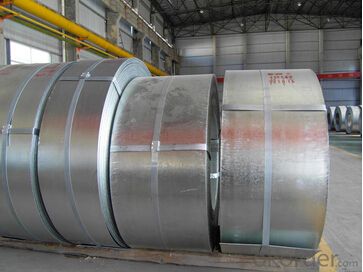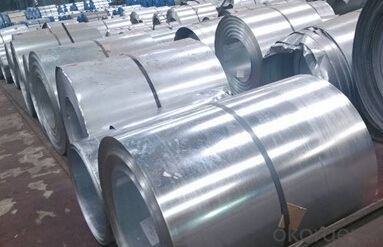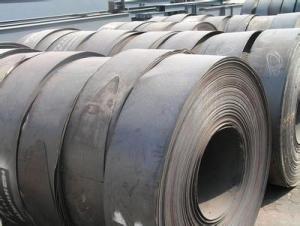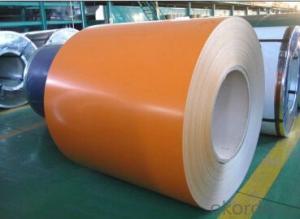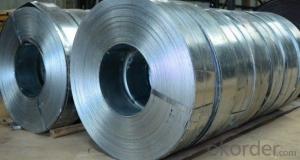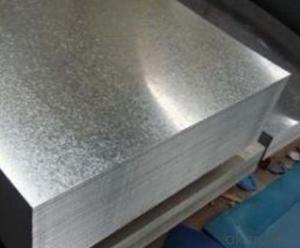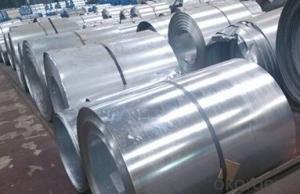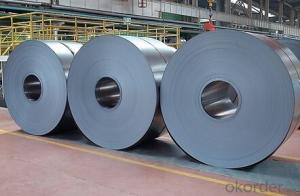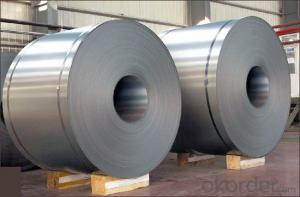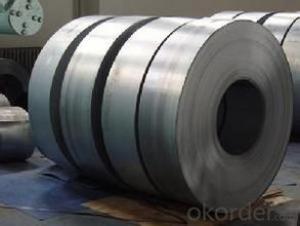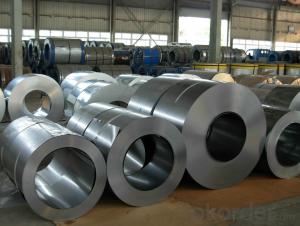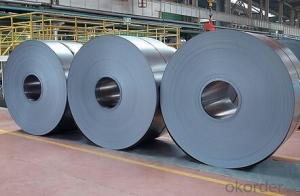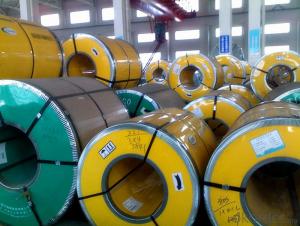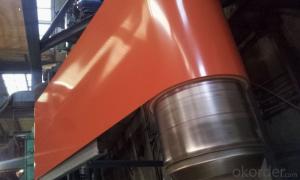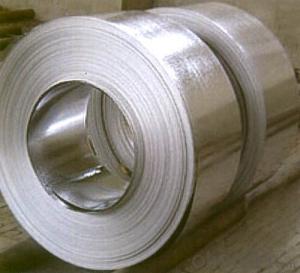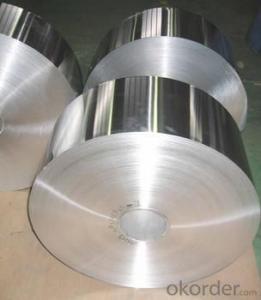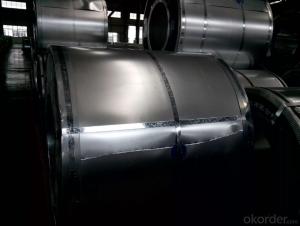Cold Rolled Steel Coil JIS G 3302 Walls Steel Coil ASTM 615-009
- Loading Port:
- Tianjin
- Payment Terms:
- TT OR LC
- Min Order Qty:
- 2222 kg/m²
- Supply Capability:
- 11 kg/m²/month
OKorder Service Pledge
OKorder Financial Service
You Might Also Like
1.Structure of Cold Rolled Steel Description:
The raw material of cold rolled steel coil/sheet is high quality hot rolled product, and after pickling continuous rolling, degreasing, annealing,skin pass,slitting and cut to length line etc. Along with it many kinds of new technology and new process of global cold rolling production have been applied. Therefore the quality of the goods could be guaranteed. The product is widely used in outdoor and interior decoration, furnishing manufacturing, home appliance, automobile etc. it has a lower melting point than steel and good castability properties.[1] Certain compositions of cast iron, while retaining the economies of melting and casting, can be heat treated after casting to make malleable iron or ductile iron objects. Steel is also distinguishable from wrought iron (now largely obsolete), which may contain a small amount of carbon but large amounts of slag.
2.Main Features of the Cold Rolled Steel:
• Excellent process capability
• Smooth and flat surface
• Workability, durability
• Excellent heat resistance performance
• High strength
• Good formability
• Good visual effect
Community portal – Bulletin board, projects, resources and activities covering a wide range of Wikipedia areas.
Help desk – Ask questions about using Wikipedia.
Local embassy – For Wikipedia-related communication in languages other than English.
Reference desk – Serving as virtual librarians, Wikipedia volunteers tackle your questions on a wide range of subjects.
Site news – Announcements, updates, articles and press releases on Wikipedia and the Wikimedia Foundation.
Village pump – For discussions about Wikipedia itself, including areas for technical issues and policies.
3.Cold Rolled Steel Images
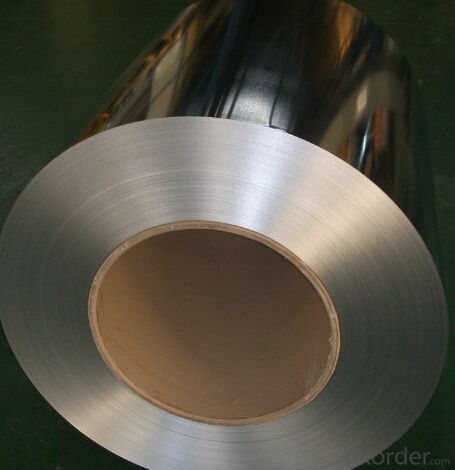
4.Cold Rolled Steel Specification
Standard:AISI,ASTM,DIN,GB,JIS,JIS G3302 ASTM 653M EN10142
Grade: Q195~Q345
Thickness: 0.16mm~1.5mm,0.16-1.5mm
Width: 1250,600-1250mm
Coil weight:3-12 MT
Coil ID:508/610mm
Chemical composition:
C | Si | Mn | Cr | Ni | P | S |
0.150 | 0.476 | 11.231 | 12.50 | 0.900 | 0.039 | 0.010
|
5.FAQ of Cold Rolled Steel
We have organized several common questions for our clients,may help you sincerely:
1.How about your company?
A world class manufacturer & supplier of castings forging in carbon steel and alloy steel,is one of the large-scale professional investment casting production bases in China,consisting of both casting foundry forging and machining factory. Annually more than 8000 tons Precision casting and forging parts are exported to markets in Europe,America and Japan. OEM casting and forging service available according to customer’s requirements.
2.How to guarantee the quality of the products?
We have established the international advanced quality management system,every link from raw material to final product we have strict quality test;We resolutely put an end to unqualified products flowing into the market. At the same time, we will provide necessary follow-up service assurance.
3. How long can we receive the product after purchase?
Usually within thirty working days after receiving buyer’s advance payment or LC. We will arrange the factory manufacturing as soon as possible. The cargo readiness usually takes 15-25 days, but the shipment will depend on the vessel situation.
- Q: What are the properties of high-strength steel strips?
- High-strength steel strips possess excellent mechanical properties, including high tensile strength, good toughness, and high fatigue resistance. They also exhibit good formability, enabling them to be easily shaped and fabricated. Additionally, high-strength steel strips have improved corrosion resistance and can withstand extreme temperatures, making them suitable for various demanding applications in industries such as automotive, aerospace, and construction.
- Q: How are steel strips tested for tensile strength?
- Steel strips are tested for tensile strength using a machine called a tensile testing machine or a universal testing machine. This machine applies a pulling force to the steel strip until it breaks, measuring the maximum force it can withstand. The results help determine the steel strip's ability to resist being pulled apart or stretched under tension.
- Q: What is the length tolerance of steel strips?
- The length tolerance of steel strips varies depending on the specific industry and application requirements, and it is typically specified by the manufacturer or customer. They indicate the permissible range of deviation from the desired or nominal length, usually expressed as a plus or minus value. For instance, a length tolerance of +/- 0.5mm means the steel strip length can deviate by up to 0.5mm in either direction. Several factors influence the specific length tolerance, including the manufacturing process, intended use, and industry standards or regulations. To determine the appropriate length tolerance, it is crucial to consult the relevant specifications and guidelines provided by the manufacturer or customer. For critical applications like the automotive or aerospace industries, tighter length tolerances may be necessary to ensure precise dimensions. Conversely, less stringent tolerances may be acceptable for applications where exact length is not as crucial, such as construction or general manufacturing. Ultimately, the specific requirements of the application determine the length tolerance of steel strips. Careful consideration is necessary to ensure the strips meet the desired specifications and performance criteria.
- Q: How are steel strips processed for surface leveling?
- Surface leveling of steel strips can be achieved through various methods. One commonly used technique is roller leveling, where the steel strip is fed through a set of high-pressure rollers. These rollers exert force on the strip, gradually bending it in the opposite direction of surface irregularities, effectively leveling the surface. Roller leveling can be performed as a standalone process or integrated into a continuous processing line, such as a rolling mill. Another method employed for surface leveling is tension leveling. Here, the steel strip undergoes tension forces as it passes through a series of bridle rolls positioned at different angles. These rolls stretch and elongate the strip, reducing surface irregularities and enhancing flatness. Tension leveling is particularly effective in eliminating defects like crossbow and center buckle in the steel strip. Moreover, some steel strips may undergo temper rolling, a process in which the strip is heated and rapidly cooled. This alters the metallurgical structure of the steel, improving its flatness. Temper rolling also enhances the mechanical properties of the strip, including hardness and strength. It is important to note that the specific surface leveling process employed may vary depending on the requirements of the steel strip and desired end product. Different combinations of roller leveling, tension leveling, and temper rolling can be utilized to achieve the desired surface quality, flatness, and dimensional accuracy of the steel strip.
- Q: Can steel strips be used in the production of firearms?
- Yes, steel strips can be used in the production of firearms. Steel strips are often used as raw materials for manufacturing various components of firearms, such as barrels, frames, and receivers. The high strength, durability, and versatility of steel make it an ideal material for firearm production.
- Q: How are steel strips tempered for increased hardness?
- Heat treatment is a process used to increase the hardness of steel strips by tempering them. This process involves subjecting the strips to controlled heating and cooling cycles, which alter their microstructure and strengthen the material. To begin, the strips are heated to a specific temperature called the austenitizing temperature. This temperature varies depending on the type of steel and the desired hardness. The strips are then held at this temperature for a certain period of time to ensure even distribution of heat. After the austenitizing process, the strips are rapidly cooled, a process known as quenching. Quenching can be done using different methods such as oil, water, or air, depending on the desired properties of the final product. The rapid cooling transforms the microstructure of the steel, resulting in increased hardness. Following quenching, the strips are tempered. Tempering involves reheating the steel to a lower temperature, typically between 300-700 degrees Celsius (572-1292 degrees Fahrenheit), for a specific duration. This step is crucial as it relieves internal stresses caused by quenching and further modifies the microstructure. The tempering temperature and duration are carefully chosen to achieve the desired hardness and toughness. Higher tempering temperatures result in lower hardness but increased toughness, while lower tempering temperatures lead to higher hardness but reduced toughness. In conclusion, increasing the hardness of steel strips through tempering involves controlled heating, rapid cooling through quenching, and subsequent tempering at specific temperatures. By manipulating the steel's microstructure, the desired hardness can be achieved, making the strips suitable for applications requiring strength and durability.
- Q: How do steel strips contribute to reducing waste generation in various applications?
- Steel strips contribute to reducing waste generation in various applications in several ways. Firstly, steel strips are highly durable and long-lasting, which means they can be used for a longer period of time without the need for replacement. This reduces the amount of waste generated from frequent replacements of other materials. Secondly, steel strips can be easily recycled. Steel is a highly recyclable material, and steel strips can be melted down and reused to produce new steel products. This reduces the demand for new steel production, which in turn reduces the amount of waste generated from the extraction and processing of raw materials. Additionally, steel strips can be designed to be lightweight, yet strong and sturdy. This allows for the use of thinner steel strips in various applications, such as packaging, automotive, and construction industries. The use of thinner steel strips means less material is required, resulting in less waste generation during the production process. Moreover, steel strips can be used in modular systems, where they can be easily assembled and disassembled. This allows for the reuse of steel strips in different applications or the replacement of damaged parts without the need to discard the entire product. This not only reduces waste generation but also promotes a more sustainable and circular economy. In conclusion, steel strips contribute to reducing waste generation in various applications through their durability, recyclability, lightweight design, and potential for reusability. By incorporating steel strips into different industries, we can minimize waste, conserve resources, and move towards a more sustainable future.
- Q: What are the main factors affecting the strength of steel strips?
- The main factors affecting the strength of steel strips include the composition of the steel, its microstructure, the temperature at which it is processed, the amount and type of impurities present, and the mechanical processing it undergoes.
- Q: What are the main factors affecting the galvanization of steel strips?
- The main factors affecting the galvanization of steel strips are the composition and surface condition of the steel, the temperature and duration of the galvanizing process, the quality of the zinc coating, and the presence of any contaminants on the surface of the steel.
- Q: Are steel strips suitable for making jewelry?
- Yes, steel strips can be suitable for making jewelry. Steel strips are durable, versatile, and can be shaped into various designs. However, they may not be as popular as other materials like gold or silver due to their industrial aesthetic.
Send your message to us
Cold Rolled Steel Coil JIS G 3302 Walls Steel Coil ASTM 615-009
- Loading Port:
- Tianjin
- Payment Terms:
- TT OR LC
- Min Order Qty:
- 2222 kg/m²
- Supply Capability:
- 11 kg/m²/month
OKorder Service Pledge
OKorder Financial Service
Similar products
Hot products
Hot Searches
Related keywords



